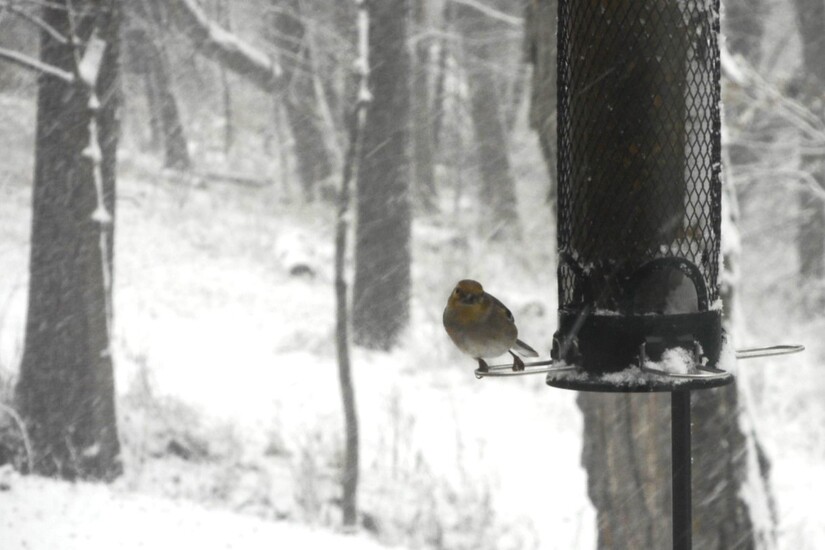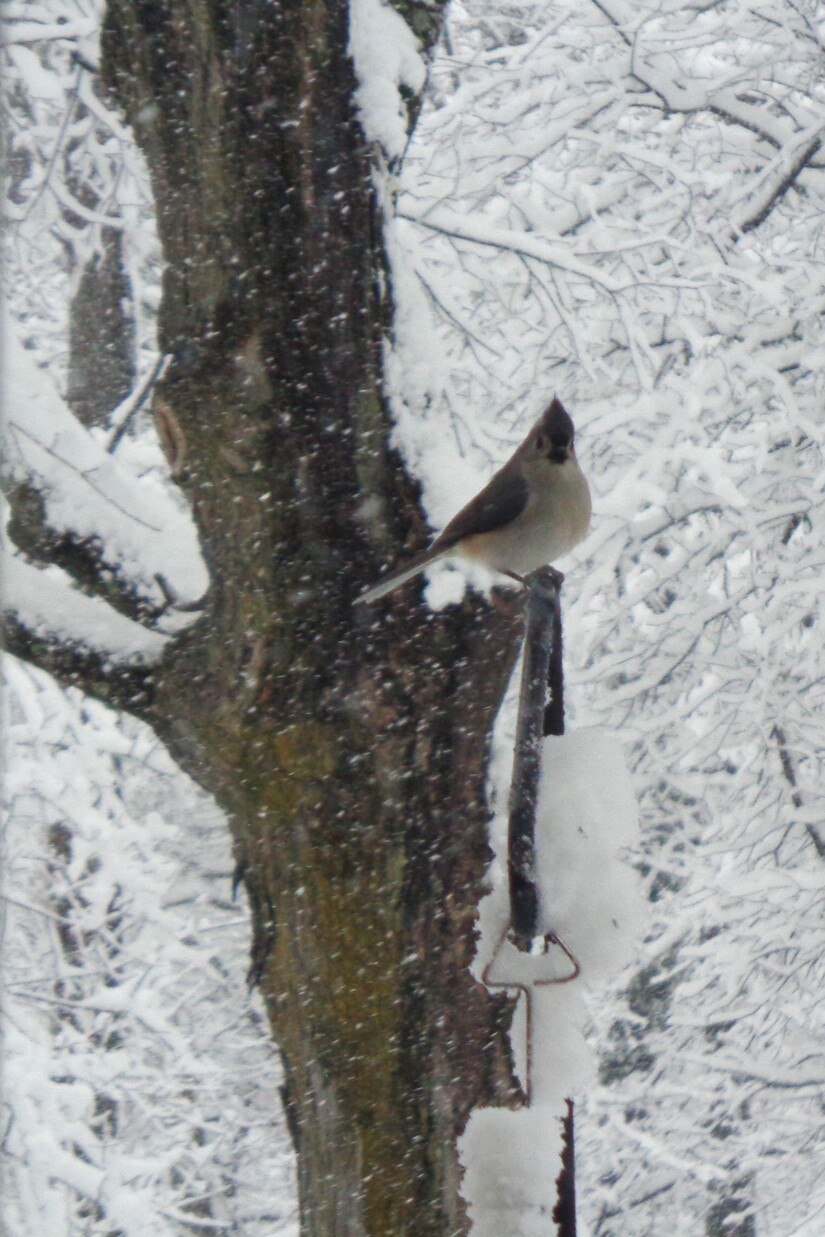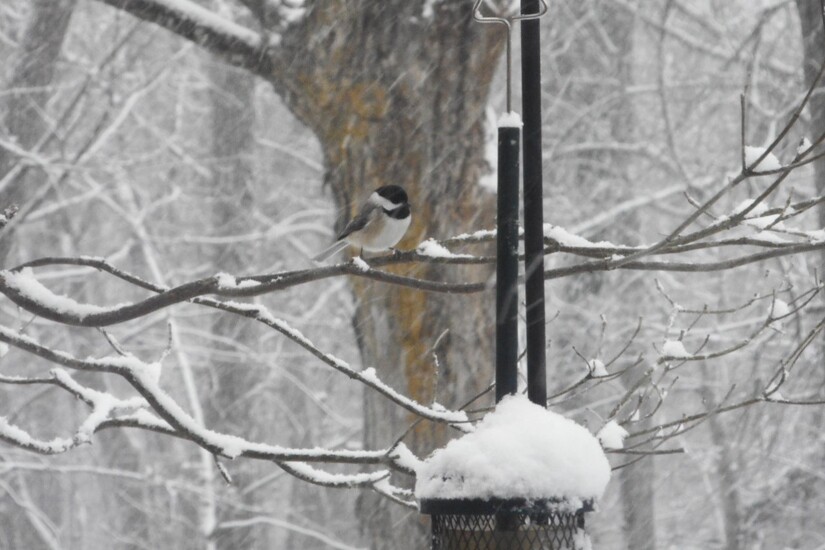Image

by Allison Kelly*
I have never been a big fan of winter. Most people assume that’s because the cold weather hurts my arthritic joints, but it’s not the temperature that bothers me. Because of my limited mobility, I cannot enjoy outdoor activities in the winter. As a child, I never made a snowman, went sledding with friends, or engaged in snowball fights. Forget about skiing or skating. As an adult, I appreciate the beauty of a snowy landscape but as an amateur photographer, I am frustrated that my disability limits me to taking pictures through the window or an open door.
But I now love the snow (as long as I have no place to go). Why? Because I discovered the joy of birdwatching a few years ago, and winter is the best time to get photos of our feathered friends. They must eat a lot to survive the cold temperatures, so if you provide them with food, they will show up. We have several feeders right outside our dining room window, providing lots of opportunities for me to take photos with my simple point-and-shoot camera.
Juncos are the birds of winter; we have a flock of about twelve that show up every year and stay all season. There’s nothing flashy about these birds - their shades of gray and white tend to blend into the barren background of winter – but I admire their fortitude in the face of some wicked winter storms. This photo of a junco precariously perched on a branch during a snowstorm is one of my favorites; the tangle of tiny branches and interesting color and texture of the tree trunk add to the drama of the picture. Notice the bird is facing the storm. What a brave little bird!

White-Throated Sparrows arrive and leave with the juncos each year. The bright yellow stripes on their heads make them easy to identify. This photo from 2024 show one trying to take refuge from the storm in a bush near the feeders. I was happy to get the bird and the pretty beaded tendrils of the pieris japonica in one shot.

Even Goldfinches with their muted yellow plumage in the winter add a welcome bit of color to the monochromatic landscape. This goldfinch was battling the elements to get some seed. It was hanging onto that feeder perch for dear life, looking very much like a downhill skier executing a turn.

The Tufted Titmouse is a moderately difficult bird to photograph. They usually swoop in, grab a seed from a feeder, then fly off to a nearby tree to peck at their treasure. This titmouse looks like it was posing for me, but I think it was a bit shocked to find the feeder beneath it half-covered in snow. I like the way the bird’s understated colors blend in with the tree trunk and snowy woods behind it. I was thrilled to get a picture of a titmouse sitting still!

Like Titmice, Chickadees are quick to grab seeds and are never ready for a close-up. I lucked out with this shot; the little bird was clamped onto a branch while the snow pelted it in the face. This handsome bird’s black, white, and tan markings blend and contrast with its background. I’m glad I caught the chickadee with the lighter brown of the tree trunk in the background – makes for a sharper picture.

Despite living almost her entire life with severe juvenile rheumatoid arthritis, Allison has always enjoyed the outdoors. Growing up on a family Christmas tree farm – she could literally go over the river (creek) and through the woods to her grandmother’s house – instilled a love of nature in her at an early age. As an adult she uses a mobility scooter or power chair to get up close to nature and take photos that she turns into note cards available for sale at Engage Arts Studio, 1005 Gravel Pike, Schwenksville, or at her online shop at www.noteworthynaturephotos.com.